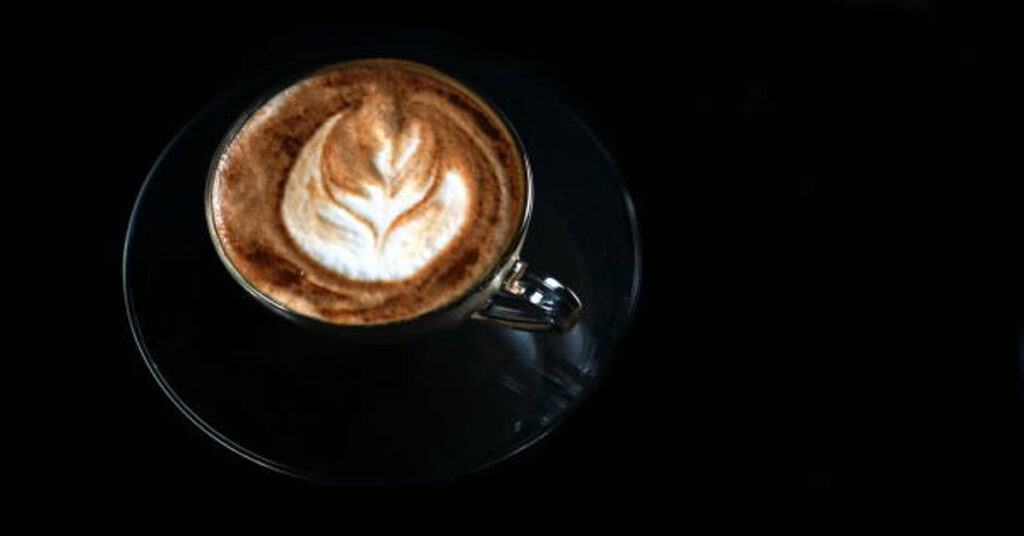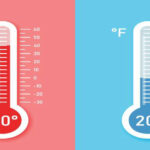A cappuccino is much more than a coffee drink. It is a symbol of balance — between espresso and milk, bitterness and sweetness, texture and aroma, energy and calm. It represents centuries of coffee culture, the evolution of brewing art, and the emotional comfort of a morning ritual shared worldwide.
In the world of coffee, cappuccino stands proudly as one of the most recognizable names, celebrated for its velvety foam, delicate presentation, and sophisticated taste. From humble European origins to global café menus, it has transformed into a beverage that bridges tradition and creativity.
This detailed guide explores cappuccino’s history, components, brewing techniques, variations, health aspects, and modern innovations — offering a deep appreciation for this classic drink.
1. The Origin and History of Cappuccino
The word “cappuccino” has Italian roots, derived from “Cappuccio,” meaning “hood.” It refers to the Capuchin monks of the 16th century whose brown robes resembled the drink’s color when espresso was mixed with frothed milk.
However, the concept of adding milk to coffee existed long before the cappuccino we know today. In 17th-century Vienna, coffeehouses served “Kapuziner,” a mix of coffee, cream, and sugar, which laid the foundation for the modern cappuccino.
It wasn’t until post–World War II Italy — when the espresso machine became a cultural symbol — that cappuccino evolved into its modern form: a small, balanced cup of espresso topped with steamed milk and microfoam. By the 1980s, as Italian espresso culture spread globally, cappuccino became a worldwide favorite.
2. Understanding What a Cappuccino Is
A cappuccino is a carefully layered espresso-based drink made with equal parts espresso, steamed milk, and milk foam. The art lies in maintaining harmony — none of the components should overpower the others.
Table: Traditional Cappuccino Ratio
| Component | Approximate Ratio | Role in Flavor and Texture |
|---|---|---|
| Espresso | 1/3 | Provides rich aroma and bitter depth |
| Steamed Milk | 1/3 | Adds sweetness and creamy balance |
| Milk Foam | 1/3 | Contributes smooth texture and lightness |
The standard serving size of a cappuccino is 150–180 ml (5–6 oz), smaller than a latte, but more balanced and aromatic.
3. The Role of Each Component
Espresso Base
At the heart of a cappuccino lies a shot of espresso, extracted under high pressure using finely ground coffee beans. The espresso must be strong but not burnt, with a rich crema layer.
The beans chosen dramatically affect flavor. While Arabica beans give sweetness and floral notes, Robusta beans contribute strength and bitterness. Many baristas prefer blends for complexity.
Steamed Milk
Steamed milk is the soul of the drink. It must be heated between 60°C to 70°C (140°F–158°F), where natural milk sugars caramelize slightly, creating subtle sweetness.
Proper steaming adds microfoam — tiny, uniform bubbles that integrate with espresso rather than floating separately. This creamy milk layer softens espresso’s sharpness, producing harmony in every sip.
Milk Foam
A cappuccino’s signature lies in its dense yet silky milk foam. The foam must be thick enough to form peaks but fine enough to pour smoothly. The foam acts as an insulating layer, keeping the coffee warm while giving that delightful, airy texture.
4. The Art and Science of Frothing Milk
Perfect frothing requires both technique and temperature control. Using a steam wand, milk is aerated by introducing air near the surface until it doubles in volume, then heated to create smooth microfoam.
Ideal Conditions for Frothing
| Parameter | Optimal Range | Effect on Milk Texture |
|---|---|---|
| Temperature | 60°C–70°C | Sweet, creamy foam |
| Steaming Duration | 20–30 seconds | Prevents overheating |
| Milk Type | Whole milk (3.5% fat) | Best foam density |
| Air Incorporation | Small, controlled bursts | Fine microfoam |
Skim or plant-based milks can also be used, but they produce lighter or less stable foam. Baristas often adjust steaming time and air pressure for oat, soy, or almond milk to mimic the classic texture.
5. Crafting the Perfect Cappuccino – Step-by-Step Guide
Making a cappuccino requires precision, patience, and artistry. Below is a classic method that can be adapted for home or café use.
Step 1: Prepare the Espresso
Grind fresh coffee beans to a fine consistency. Use approximately 18–20 grams for a double shot and extract it into a preheated cup within 25–30 seconds.
Step 2: Steam the Milk
Pour cold milk into a metal pitcher. Submerge the steam wand just below the surface and start frothing. Stretch the milk by introducing air, then immerse the wand deeper to create microfoam. Stop steaming when the pitcher feels warm but not too hot to touch.
Step 3: Pour with Balance
Hold the cup at a slight angle. Begin pouring milk steadily to mix with espresso, then move closer to the surface to add foam. Skilled baristas use this moment to create latte art — heart, rosette, or tulip patterns.
Step 4: Serve Immediately
The ideal cappuccino is served fresh — temperature, aroma, and foam stability peak within the first few minutes.
6. Variations of Cappuccino
While the classic Italian cappuccino remains the foundation, global creativity has inspired numerous adaptations.
Table: Popular Cappuccino Variations
| Variation Name | Description | Unique Feature |
|---|---|---|
| Dry Cappuccino | Less steamed milk, more foam | Stronger espresso flavor |
| Wet Cappuccino | More milk, less foam | Creamier and milder |
| Iced Cappuccino | Espresso with cold milk foam | Refreshing and light |
| Flavored Cappuccino | Infused with vanilla, caramel, or chocolate | Enhanced sweetness and aroma |
| Vegan Cappuccino | Made with oat, almond, or soy milk | Plant-based, lighter texture |
| Mocha Cappuccino | Mix of chocolate and espresso | Rich, dessert-like drink |
Each version caters to individual taste preferences and cultural influences.
7. Cappuccino vs Latte vs Macchiato
Many people confuse these espresso-based drinks, yet they differ in composition and presentation.
Comparison Table
| Drink Type | Milk-to-Espresso Ratio | Foam Level | Cup Size | Taste Profile |
|---|---|---|---|---|
| Cappuccino | 1:1:1 (equal parts) | Medium | 150–180 ml | Balanced and smooth |
| Latte | 1:3 espresso to milk | Thin foam | 240–300 ml | Milder, creamier |
| Macchiato | Espresso with dash of foam | Minimal | 60–90 ml | Strong and bold |
Understanding these distinctions helps both baristas and enthusiasts appreciate the balance that makes cappuccino unique.
8. The Cultural Significance of Cappuccino
In Italy, cappuccino is more than a drink — it’s a morning ritual. Traditionally, Italians enjoy it only before 11 a.m., believing milk-based drinks after meals hinder digestion. The beverage symbolizes the beginning of a productive day, paired with a pastry or croissant.
In other parts of the world, cappuccino represents relaxation, social bonding, and artistic expression. Coffeehouses have transformed it into a cultural symbol of conversation and creativity. The foam-topped cup often doubles as a canvas for latte art, bringing beauty to daily life.
9. Cappuccino in Modern Coffee Culture
The cappuccino has adapted beautifully to modern café trends. Specialty coffee shops now emphasize single-origin beans, milk alternatives, and latte art mastery.
Social media and digital platforms have amplified cappuccino’s aesthetic value — its swirling foam and artistic patterns have become visual icons of comfort and craftsmanship.
Moreover, innovations like cold foam cappuccinos, flavored syrups, and nitro coffee infusions continue to expand how people enjoy this timeless beverage.
10. Latte Art – The Visual Soul of Cappuccino
Latte art emerged in the late 1980s and quickly became a defining element of cappuccino culture. It transforms milk foam into patterns, adding visual pleasure to taste.
Common designs include:
- Hearts: Symbolizing warmth and simplicity.
- Rosettas: Fern-like patterns showcasing skillful pouring.
- Tulips: Layers of foam forming petal shapes.
- Swan designs: Advanced artwork for expert baristas.
Latte art requires steady hands, timing, and precision. The goal is to blend art and science — a visual reflection of a well-prepared cappuccino.
11. Health Benefits of Cappuccino
Beyond its comforting taste, cappuccino provides nutritional and psychological benefits when consumed in moderation.
Table: Key Health Aspects
| Nutrient/Component | Benefit |
|---|---|
| Caffeine | Boosts alertness and concentration |
| Antioxidants | Neutralize free radicals, improving cell health |
| Milk Proteins | Support muscle recovery and bone strength |
| Calcium | Strengthens bones and teeth |
| Moderate Sugar | Provides quick energy without overload |
Studies have shown that moderate coffee intake can enhance metabolism, improve mood, and even support heart health when paired with balanced nutrition.
12. Common Mistakes in Making Cappuccino
Even experienced baristas can make small errors that disrupt the perfect balance.
Frequent Mistakes Include:
- Overheating milk, which creates burnt flavor.
- Under-aerating, leading to flat foam.
- Using old coffee grounds, which taste bitter.
- Incorrect pouring speed, resulting in uneven layering.
- Serving in oversized cups, which dilutes the blend.
Avoiding these pitfalls ensures the authenticity of the cappuccino experience.
13. Equipment Needed for Cappuccino Preparation
To craft a professional-grade cappuccino, quality equipment is essential.
Essential Tools
| Tool | Function |
|---|---|
| Espresso Machine | Extracts espresso under high pressure |
| Steam Wand | Froths milk to desired consistency |
| Grinder | Ensures precise coffee particle size |
| Tamper | Compresses grounds for even extraction |
| Milk Pitcher | Used for steaming and pouring milk |
| Thermometer | Monitors milk temperature accuracy |
Home users can achieve excellent results using compact espresso machines with built-in steam wands.
14. Specialty Variations Across Countries
Cappuccino’s global journey has inspired local adaptations, reflecting each region’s taste preferences and traditions.
| Country | Local Variation | Unique Twist |
|---|---|---|
| Italy | Classic Cappuccino | Equal milk, espresso, foam |
| USA | Large Cappuccino | Served in bigger mugs, creamier |
| Australia | Flat White | Similar to wet cappuccino, less foam |
| Austria | Kapuziner | Coffee with whipped cream |
| India | Filter Cappuccino | Made with South Indian filter coffee |
Such diversity highlights how cappuccino has become a cultural bridge — connecting coffee traditions worldwide.
15. The Rise of Plant-Based Cappuccinos
With growing interest in vegan and lactose-free lifestyles, plant-based cappuccinos are gaining immense popularity.
Oat milk is currently the most preferred alternative because it mimics the creamy texture of dairy milk. Almond milk adds nutty flavor, while soy milk provides protein richness. Baristas adjust steaming techniques to create equally stable foam without dairy.
These variations maintain cappuccino’s essence — comfort, texture, and balance — while accommodating modern dietary needs.
16. Psychological and Emotional Connection with Cappuccino
Beyond flavor, cappuccino connects deeply with human emotion. Its warmth, aroma, and texture trigger feelings of relaxation and contentment.
The act of sipping a cappuccino can symbolize self-care, pause, or reflection in a fast-paced world. Many people associate it with cozy cafés, creative thinking, or shared moments — turning it into an emotional experience as much as a beverage.
17. Cappuccino in Art, Film, and Literature
Cappuccino frequently appears in movies, books, and visual arts as a symbol of sophistication and intimacy. In films, it often accompanies scenes of friendship or romance, representing comfort and communication.
In literature, authors use cappuccino imagery to evoke warmth, smell, and serenity. Its rich brown hue and creamy top also inspire painters and photographers who capture everyday beauty.
18. Cappuccino and Sustainability
Modern coffee culture faces challenges regarding sustainability — from bean sourcing to waste reduction. Ethical cafés emphasize:
- Fair-trade beans that support farmers.
- Recyclable cups and lids to reduce waste.
- Energy-efficient machines for responsible production.
- Locally sourced milk to cut transport impact.
Consumers increasingly choose cafés that blend great flavor with environmental respect, making cappuccino not only delicious but also socially responsible.
19. Tips for Enjoying the Perfect Cappuccino at Home
You don’t need a professional café setup to enjoy authentic cappuccino flavor.
Practical Tips:
- Always use freshly roasted beans.
- Invest in a quality grinder for consistent texture.
- Preheat your cup to retain warmth.
- Don’t overfill milk; allow room for foam expansion.
- Clean the steam wand after each use.
Patience and attention to detail create a home cappuccino that rivals any barista’s work.
20. The Timeless Appeal of Cappuccino
Despite changing trends and innovations, cappuccino remains timeless. Its perfection lies in simplicity — the elegant trio of espresso, milk, and foam creates balance unmatched by any other drink.
Whether sipped in a bustling Italian café or brewed quietly at home, cappuccino represents craftsmanship, culture, and comfort in one cup. It continues to unite people across continents through the universal language of coffee.
Frequently Asked Questions (FAQs)
1. What makes a cappuccino different from a latte?
A cappuccino has equal parts espresso, milk, and foam, creating a balanced flavor. A latte uses more milk and less foam, producing a creamier, milder taste.
2. Can I make cappuccino without an espresso machine?
Yes. You can use strong brewed coffee or a moka pot for espresso and froth milk using a handheld frother or French press.
3. Which milk is best for cappuccino?
Whole milk creates the richest foam and smoothest texture. However, oat or soy milk can be excellent dairy-free options.
4. How many calories are in a cappuccino?
A standard cappuccino with whole milk contains approximately 80–120 calories. This varies with milk type, sugar, and flavoring additions.
5. Why is cappuccino usually served in small cups?
Smaller cups maintain balance between espresso and milk. Oversized cups dilute flavor and alter texture, reducing the authentic cappuccino experience.







